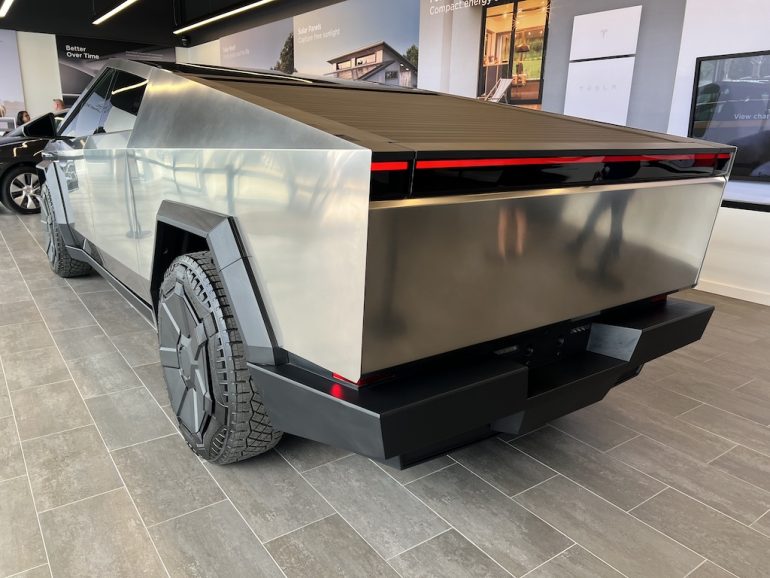
The internet has been abuzz with reports of new Tesla Cybertrucks showing visual signs of rust, leaving owners and intrigued enthusiasts scratching their heads in disbelief. Many are left confused as to if the reports are isolated benign events or a serious issue that may arise on more than a few new Cybertrucks. Could it be surface rust or maybe rail dust from transport? Some are contrasting the reports and wondering why the stainless steel DeLorean never rusted or showed the same signs of supposed rust of the Cybertrucks in these reports. Well, there could be a lot more going on than we assume to understand, initially.
Stainless steel, touted for its resistance to corrosion, is not completely immune to rusting. Stainless steel is essentially steel alloyed with chromium and sometimes other elements like molybdenum, nickel, and manganese. Chromium plays a crucial role in inhibiting corrosion and increasing the alloy’s hardness.
However, creating an alloy is like cooking or mixing compounds—no matter how well you mix the ingredients, there may still be masses of single elements present in a group, which in the case of steel on the Cybertruck there could be other mixed-in elements. Similarly, regardless of the quality of stainless steel used, there will always be areas where the alloying elements are not uniformly distributed. Of course, these instances may have been mostly mitigated, all dependent on the process of production.
Tesla’s Cybertruck reportedly uses a stainless steel alloy chosen for its durability and corrosion resistance. But even with a high-quality alloy, the presence of impurities or uneven distribution of elements can lead to localized corrosion, as we may be seeing in the reports we’re witnessing on the Internet alleged as rust spots on the Cybertruck.
Visible rust spots on stainless steel indicate areas where iron has oxidized. That’s just the fundamentals of steel. Stainless steel possesses a unique property with a layer of chromium oxide on the surface, protecting it from rusting when exposed to oxygen. This is why, unlike traditional steel, surface corrosion on stainless steel does not typically progress deeper into the material. Many times, we see supposed rust and claim it to simply be surface rust, which can be easily cleaned and removed on stainless steel.
Exposure to chlorides found in certain detergents or solvents can compromise the protective layer on stainless steel, leading to pitting corrosion and essentially rust. The absence of the oxide layer allows corrosion to penetrate deeper into the material, resulting in the formation of pits and rust.
Avoiding exposure to harsh abrasives and many common elements like salt may be a crucial precaution that new Cybertruck owners might have to take – though we’re not certain until these rust reports are investigated. However, in drawing a comparison to just about every other vehicle on the road, rusting on body panels has rarely been an issue as vehicles have long been properly treated with protective elements in addition to having a paint and clearcoat that ultimately inhibits rust in any form from the factory. Maybe this turns into the case of using abrasive cleaning elements that’s causing the rust to form. Maybe it is just rail dust mixed with a little water. It could be just as simple as that, and the case is closed.
We don’t know for certain, at the moment, the source of these rust spots on new Cybertrucks as reports are just now circulating and we have not examined one for ourselves. What we do know is if new Tesla Cybertrucks are in fact “rusting,” someone is going to have a serious case on their hands and the media isn’t going treat such news well.

Darryl Taylor Dowe is a seasoned automotive professional with a proven track record of leading successful ventures and providing strategic consultation across the automotive industry. With years of hands-on experience in both business operations and market development, Darryl has played a key role in helping automotive brands grow and adapt in a rapidly evolving landscape. His insight and leadership have earned him recognition as a trusted expert, and his contributions to Automotive Addicts reflect his deep knowledge and passion for the business side of the car world.